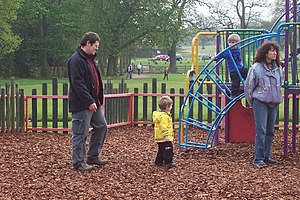
In an article in the The Times of India, September 17, 2011 Monami K. Thakur writes in “Health Me Up” Spinal Cord Injuries (SCIs) are quite debilitating and can happen to any one at any time. Such injuries may vary from minimum impact to total loss of function.
Besides trauma, SCIs can also occur from certain diseases and infections like some cancers, spinal cord vascular diseases and vertebral injuries. Although no definite procedures can completely reverse the damage and regenerate the lost nerve functions, treatment and rehabilitation may help one resume an active life. Used in conjunction with the HandTutor, LegTutor, ArmTutor and 3DTutor the best treatment is available for joint rehabilitation.
Rehabilitation phases: Rehabilitation usually starts during the early stage of recovery once the destabilizing factor is medically removed. In case of trauma, the process starts after the immediate medical care is complete. The process is broadly segregated into two phases – early rehabilitation and long term care. The early rehabilitation focuses on increasing functional independence and restoring lost neuro-muscular functions. Long term care involves recreational and vocational training, which determines likelihood for employment depending on dexterity and physical and cognitive functions. The Tutor system is designed to improve dexterity and physical functions.
Rehabilitation team: A spinal injury rehabilitation team comprises specialists from different sectors of medical and paramedical sectors. Usually led by a doctor specialized in physical medicine and rehabilitation, the team also includes rehabilitation nurses, physiotherapists, rehabilitation psychologists, nutritionists, recreational therapists and vocational specialists among others. Each team member has specific tasks oriented towards helping the patient to lead as active a life as possible. With the HandTutor, ArmTutor, LegTutor and 3DTutor the physical therapist has objective quantitative evaluations that provide him information to customize the most suitable rehabilitation program to the patient’s ability.
Physiotherapy: Physical therapists play a very important role in assisting the immobilized patients with effective stretching techniques, teaching wheelchair skills, breathing exercises and chest clearance (for instance better coughing techniques). Such procedures help the patient overcome complications of immobilization associated with SCI like contractures, bed sores and fluid accumulation in the lungs. When joint movement is affected the Tutors assist in intensive exercise programs via dedicated software which allows the therapist to fully customize the program to the patient’s movement ability.
Treatment as per level of involvement: Usually, the treatment procedures vary depending on the spinal cord involvement and the outcome of injury. Different levels of SCI will exhibit different symptoms in a patient. Besides this, rehabilitation also depends on whether the injury is complete or incomplete. In incomplete injuries, the spinal cord’s ability to convey messages to and from the brain is not completely lost, as opposed to complete injuries. Also, the level of injury determines whether a patient will be quadriplegic (all four limbs affected) or paraplegic (only legs and trunk affected). When the injury is incomplete the Tutors are the most effective.
The LegTutor, for example, has shown great success in rehabilitating knees post surgery. This innovative device is a brace attached to the affected leg and is connected by sensors to a computer with a dedicated intensive exercise program.
The HandTutor™ system is an active exercise based hand rehabilitation program that uses the accepted methods of impairment oriented training (IOT) with augmented feedback. The HandTutor™ evaluates and treats finger and hand movement dysfunction through exercises that encourage extension/ flexion of the finger(s) and wrist.
The HandTutor™ system consists of a safe comfortable glove, with position and speed sensors that precisely record finger and wrist motion, and dedicated rehabilitation software. The ergonomic gloves come in five sizes for both right and left hands. The rehabilitation system employs the known concept of biofeedback to give occupational and physical therapists access to an affordable user friendly hand rehabilitation package. The HandTutor™ can also be used in combination with the 3DTutor™ for arm rehabilitation.
The ArmTutor™ system has been developed to allow for functional rehabilitation of the upper extremity. The system consists of an ergonomic wearable arm brace and dedicated rehabilitation software. The ArmTutor™ system allows for a range of biomechanical evaluation including speed, passive and active range of motion and motion analysis of the upper extremity. Quantitative biomechanical data allow for objective evaluation and rehabilitation treatment follow up.
The Tutor system is widely used by leading U.S. and foreign hospitals and clinics. It can also be used at home through telerehabilitation.
No comments:
Post a Comment